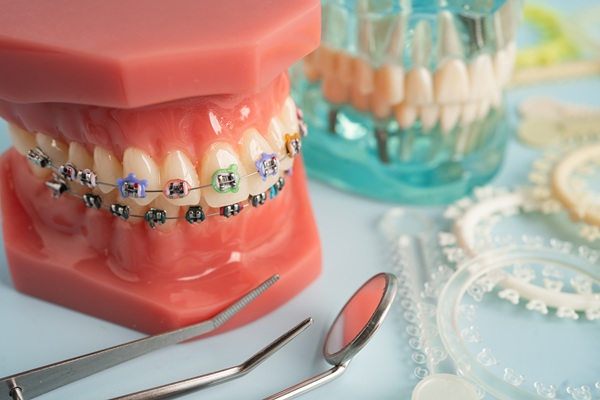Are you considering Invisalign clear aligners as a potential solution to straighten your teeth but wondering how long the treatment will take? It’s a common question and one that’s important to understand before committing to the process. The good news is that Invisalign is often faster than traditional metal braces and can produce great results in a relatively short period of time.
In this blog post, we’ll give you a comprehensive guide to the Invisalign time frame and the factors that can influence the duration, so you know what to expect during the course of your treatment.
What Are Invisalign?
Invisalign is a clear aligner system designed to straighten teeth and improve the overall appearance of your smile. Unlike conventional fixed braces, Invisalign uses a series of clear, removable aligners that gradually shift your teeth into the required position. Each set of aligners is custom-made to fit your teeth and mouth and is worn for about two weeks before being replaced with the next set in the series.
The aligners are made of a comfortable, smooth plastic material that won’t irritate your cheeks or gums, and they are virtually invisible when worn, making them a popular choice for people who want to improve their smile without drawing attention to their orthodontic treatment. Invisalign can help treat various dental issues, from simple cosmetic concerns like crooked or crowded teeth to more complex cases involving overbites, underbites, and other malocclusions.
If you’re considering Invisalign, it’s crucial to work with a dental practitioner who can help you determine whether the treatment is appropriate for your specific needs and goals..
How Long Does Invisalign Typically Take?
While the average treatment time for Invisalign aligners is around 12-18 months, the actual treatment time can vary depending on factors such as:
- the severity and complexity of the dental issues being addressed
- how well the patient follows the treatment plan
For minor cosmetic corrections, Invisalign can often deliver noticeable results within six months. On the other hand, more complex dental issues like overcrowding may require up to 24 months of treatment.
Invisalign Time Frame: Reason Why it May Need Different Lengths of Time
While Invisalign is an effective treatment option for many patients seeking a straighter smile, the duration of the treatment can vary depending on the severity and complexity of the dental issues of each patient. Here are some common reasons why Invisalign may require different lengths of time to achieve optimal results:
Severe Alignment Issues
Patients with severely misaligned teeth or bite issues may require longer treatment times with Invisalign because these issues are more complex to address than minor cosmetic corrections. Severe alignment issues often require more extensive tooth movement, and the treatment may require additional aligners or attachments to maximise the result. In some cases, other orthodontic treatments may be necessary to address these more complex dental issues, which can also increase the treatment time.
Crowded Teeth
In severe cases of crowding, the Invisalign treatment may take longer than average. The dentist may advise the patient to continue wearing aligners until their teeth are properly aligned. This can lead to an extension of the treatment time, as the process may require more aligners and attachments to achieve the desired results. Patients must adhere closely to their treatment plan and attend regular check-ups with their dentist to ensure the treatment progresses smoothly.
Gaps in Teeth
Gaps in teeth, also known as diastema, can occur due to several reasons, such as genetics, abnormal growth of teeth, or gum disease. Invisalign aligners work by gradually shifting the teeth into their proper positions, which can help close the gaps. However, the size and location of the gaps can impact the duration of the treatment.
For patients with both moderate to severe gaps and crowding, the treatment time with Invisalign can be longer, somewhere around 18 months or more. The duration may depend on how quickly the teeth adjust to the aligners and how well the patient follows the treatment plan.
Sometimes, the gaps between teeth occur due to a jaw that is too large for the teeth, and it may be challenging to fully close the gaps with Invisalign alone. In such cases, your dentist may recommend other treatment options, such as dental bonding or veneers, to achieve the desired outcome.
Ultimately, the decision to undergo Invisalign treatment should be made in consultation with a dental practitioner who can evaluate your case and provide personalised recommendations. With the right care and commitment, Invisalign can be a highly effective solution for achieving a straighter, healthier smile.
Get the Smile You Deserve with Invisalign
If you want to find out whether Invisalign is the right choice for you, book a consultation with Bellevue Hill Dental. Our dental practice provides comprehensive dental care to ensure the patients feel comfortable and informed throughout their treatment process. Don’t let dental alignment issues hold you back from achieving the smile you want. Book a consultation with Bellevue Hill Dental today and take the first step towards a healthier, happier you.



